Abstract
This article examines the evaluation of a bancroftian filariasis control programme undertaken in Pondicherry from 1981-5. Integrated vector management was applied in one half of the town, and routine operations under the national programme (larviciding and chemotherapy) continued in the comparison area. The programme was evaluated by monitoring relative change in the epidemiological statistics of both populations. The results indicate that there was significant reduction in prevalence of microfilaraemia in juveniles in the controlled area. An apparent reduction in intensity of microfilaraemia was also observed but this was a consequence of the reduction in prevalence, since the density of microfilariae remained unchanged. The results suggest that primary constraints on the epidemiological evaluation of the vector control of filarasis are the longevity and the population characteristics of the parasite.
Full text
PDF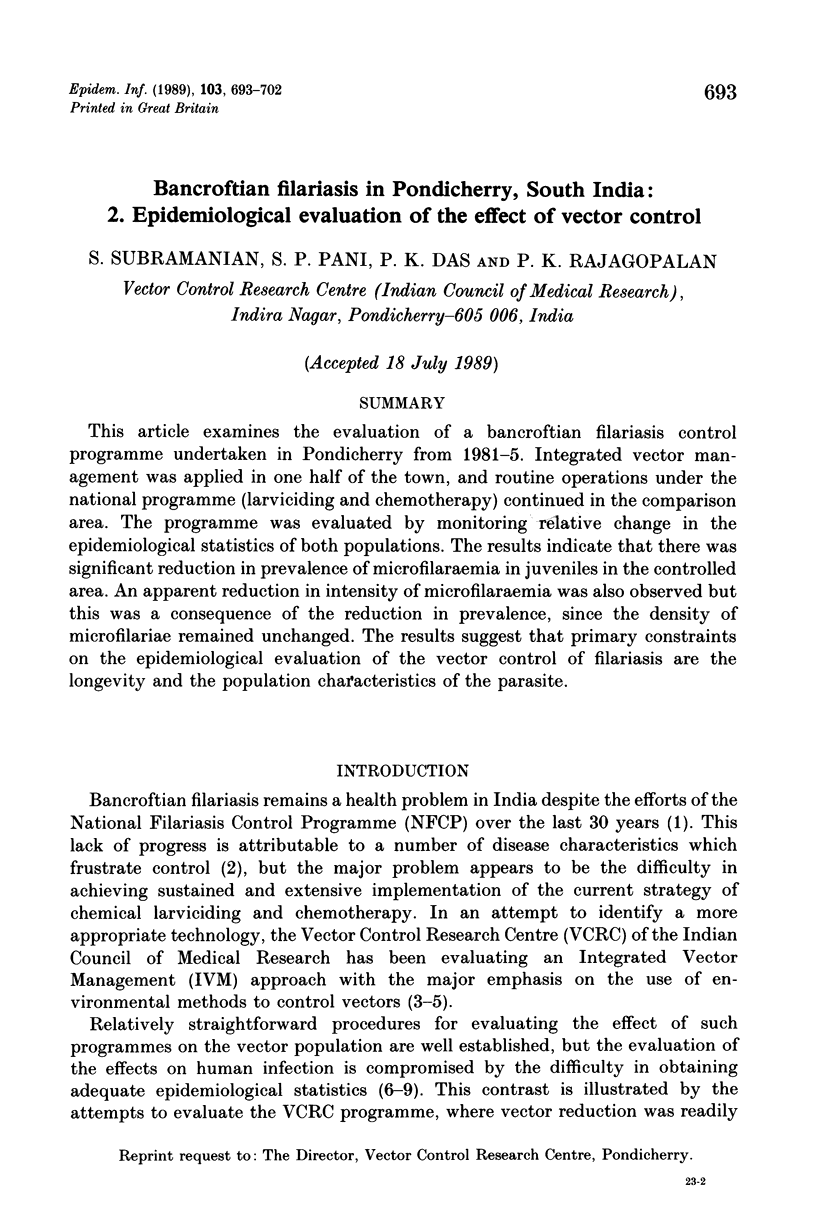
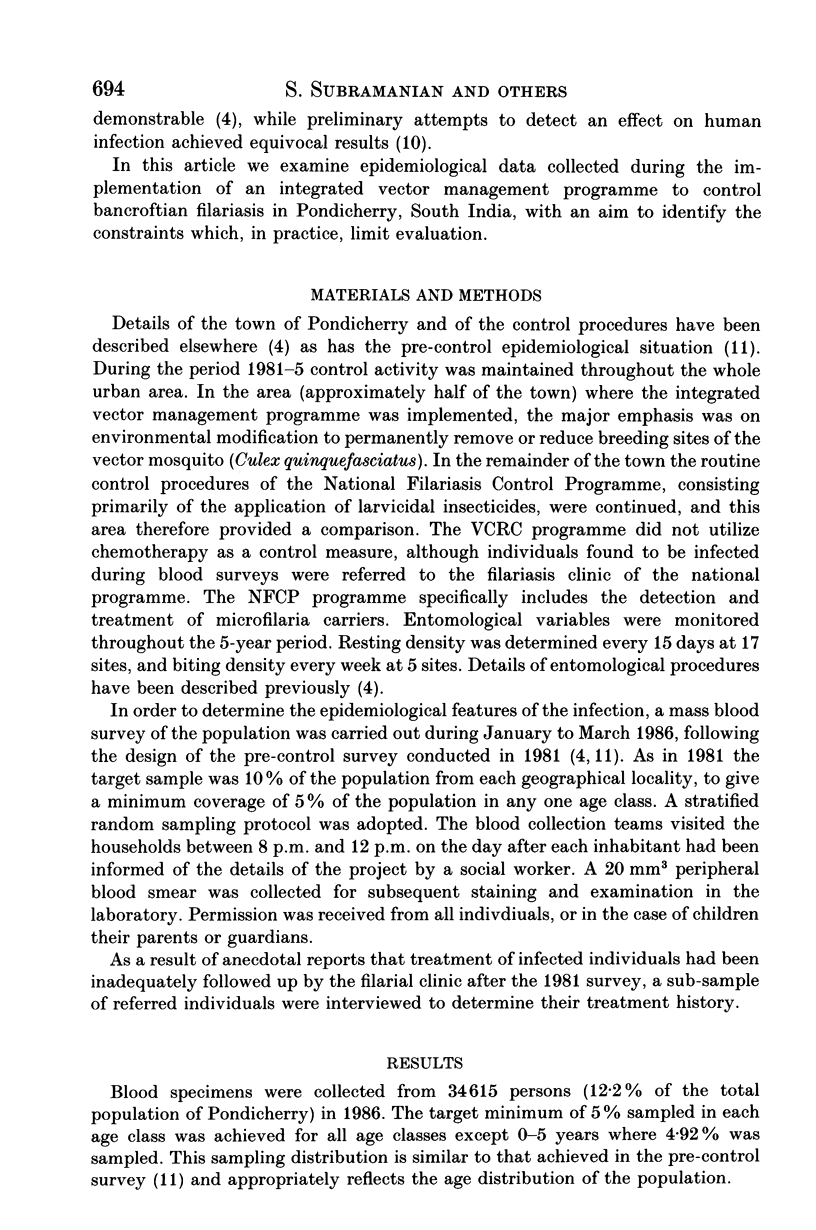
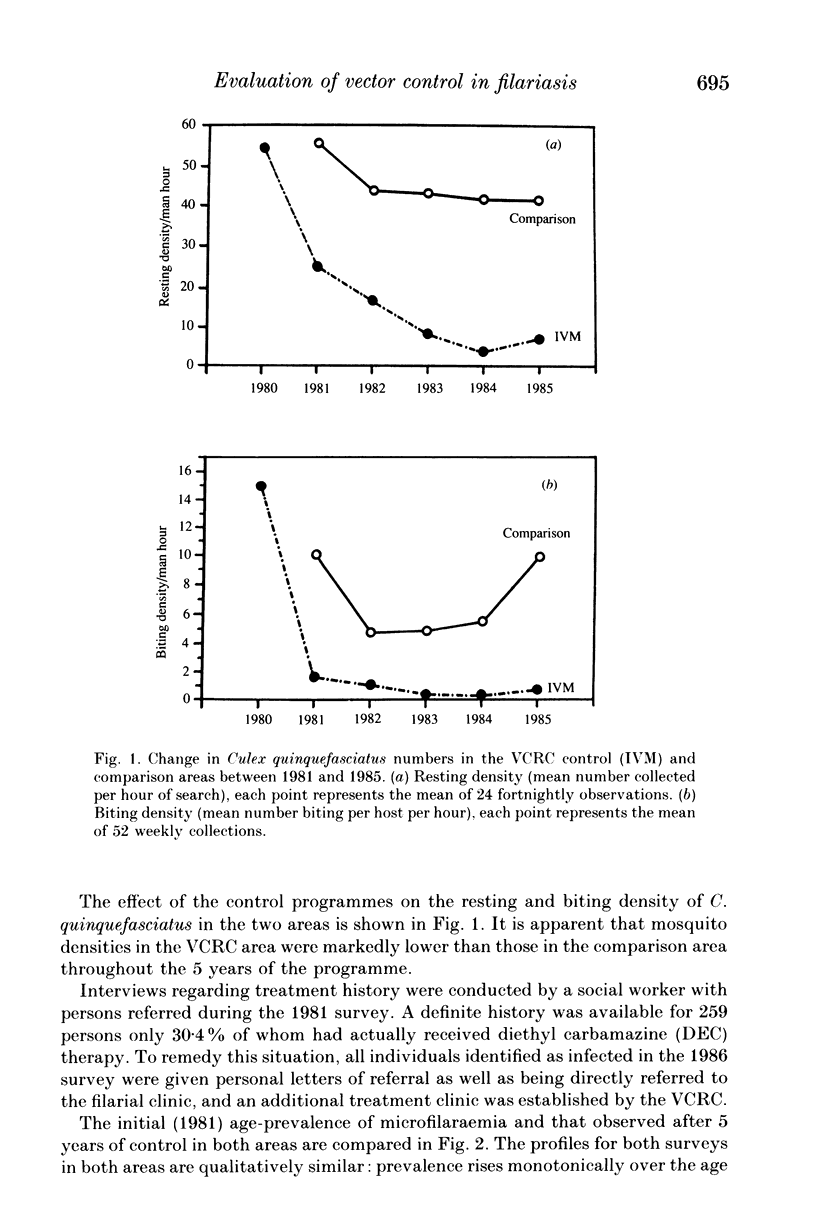
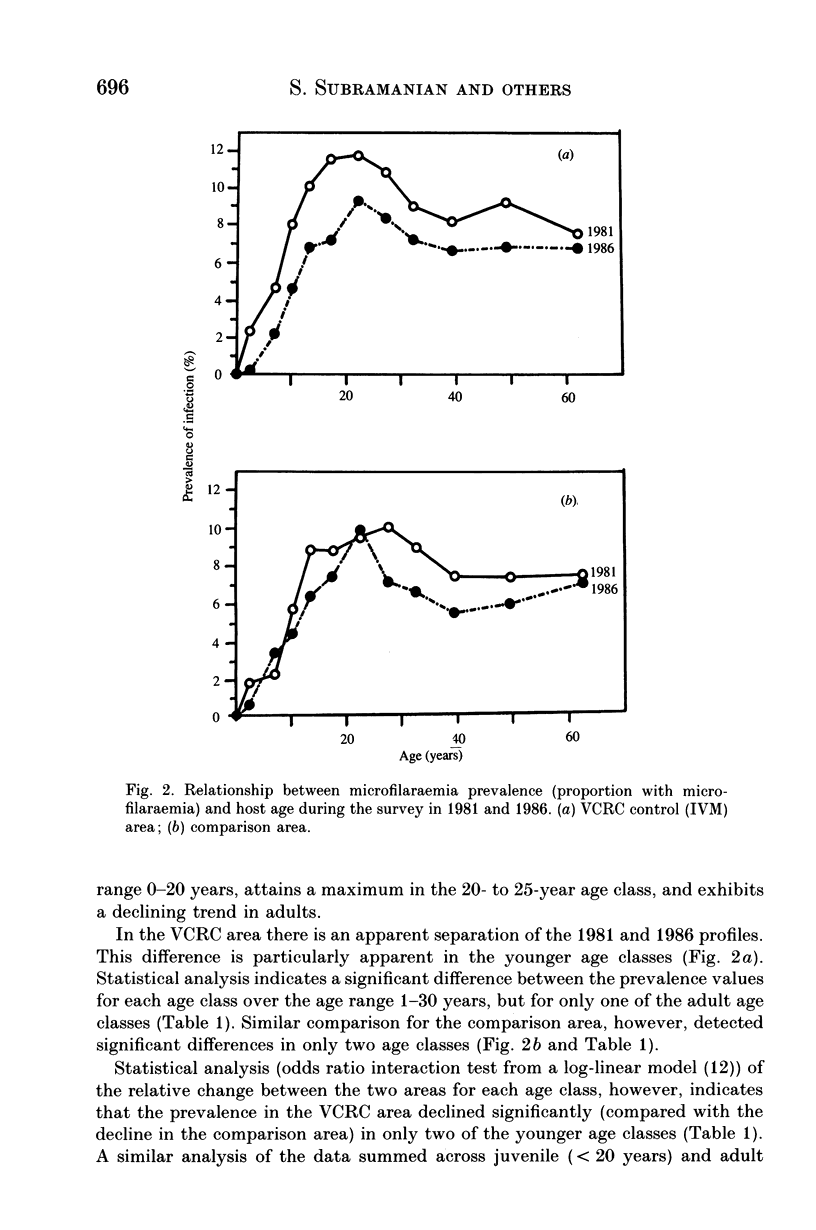
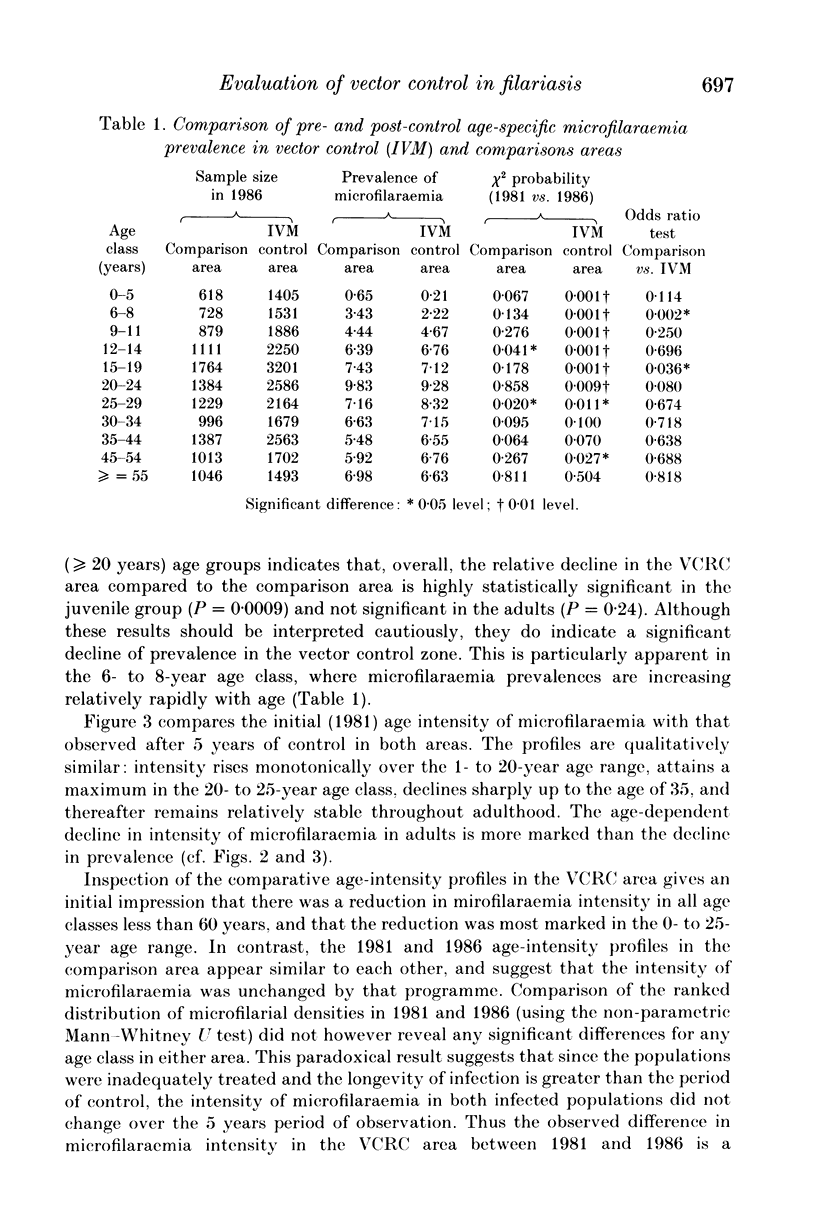
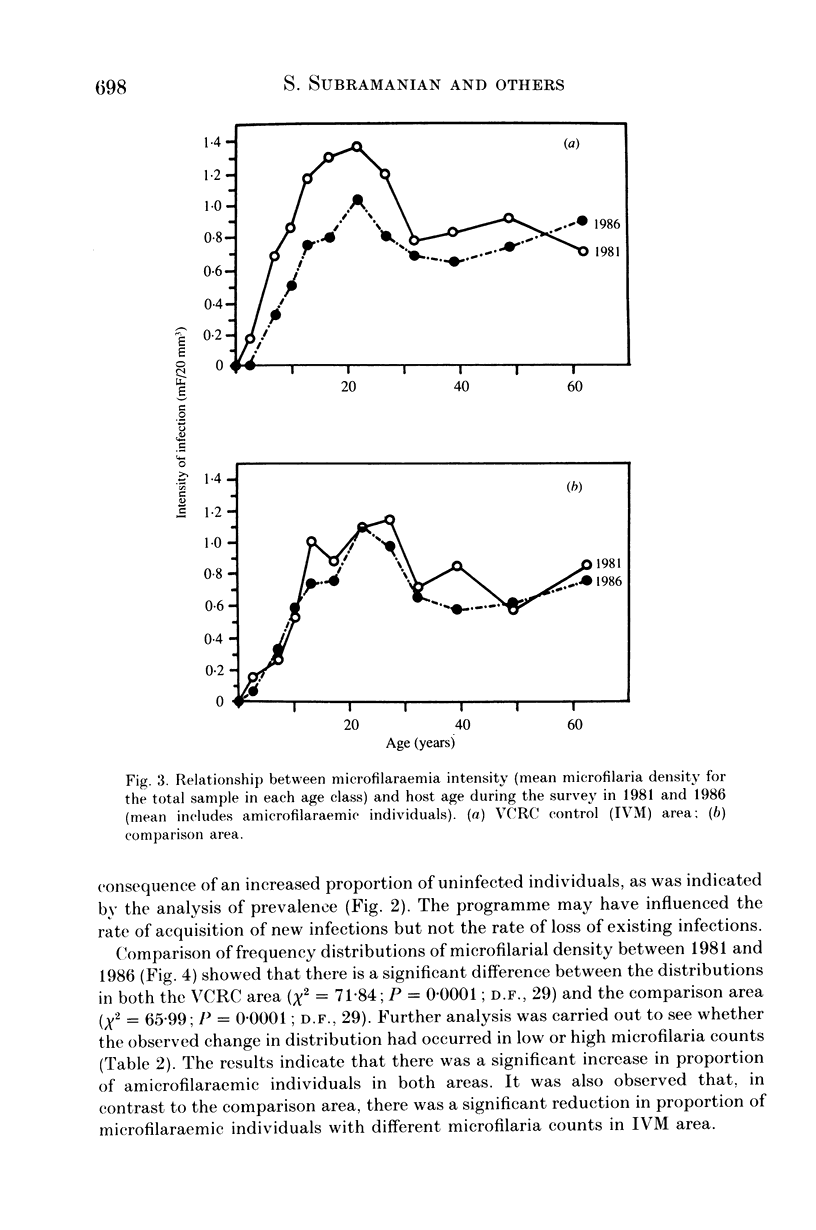
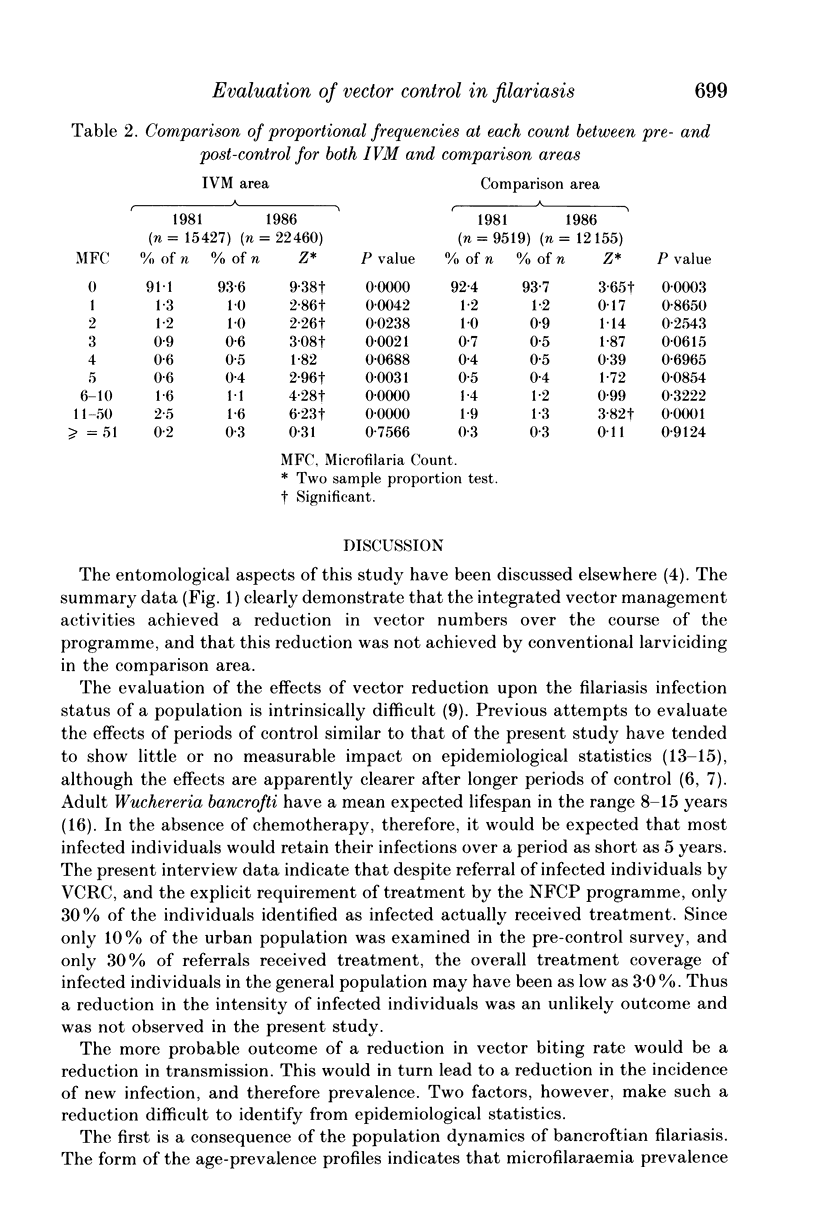
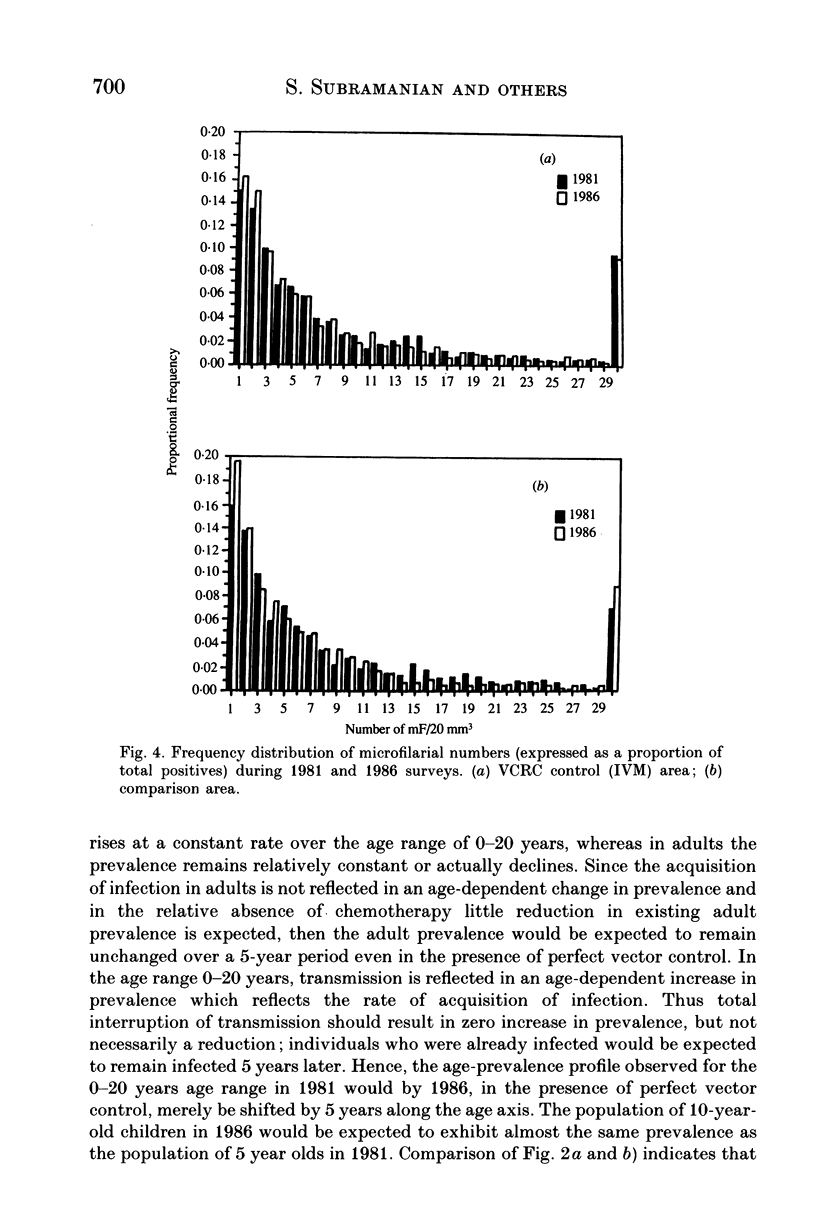
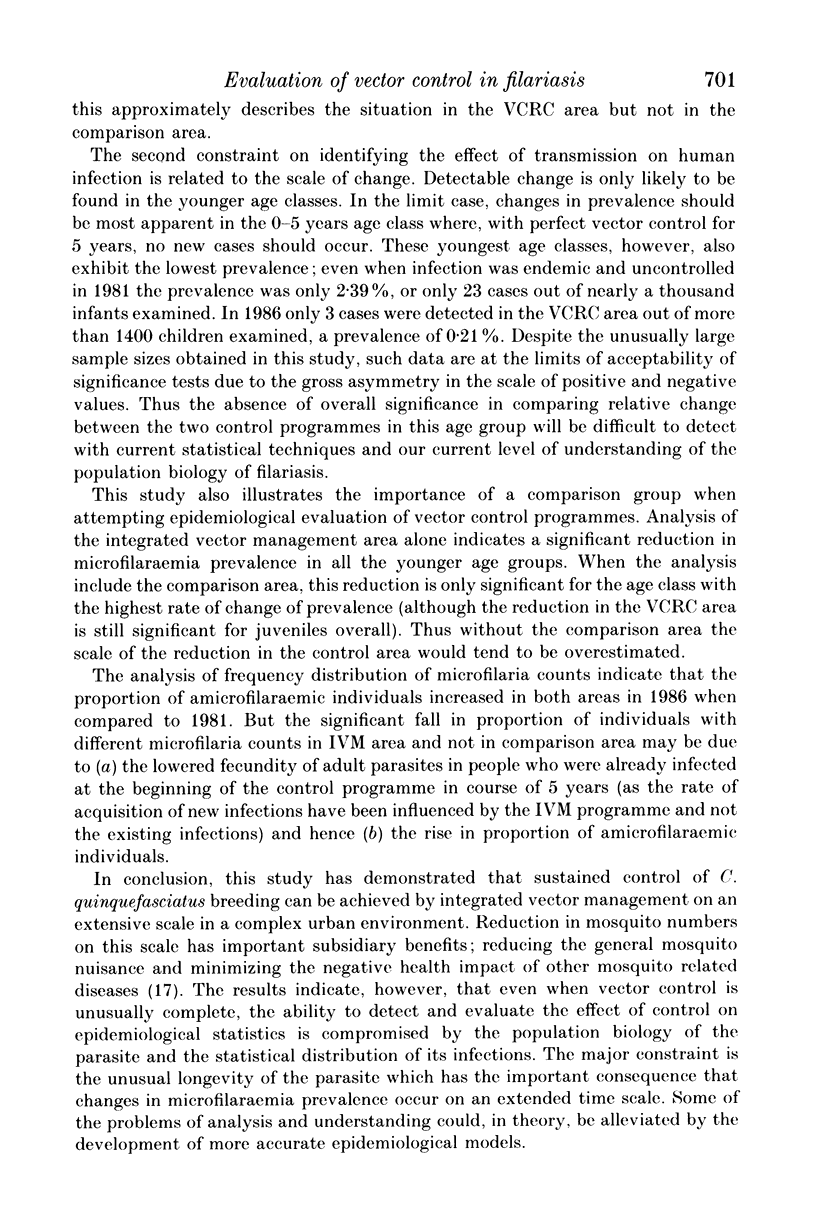
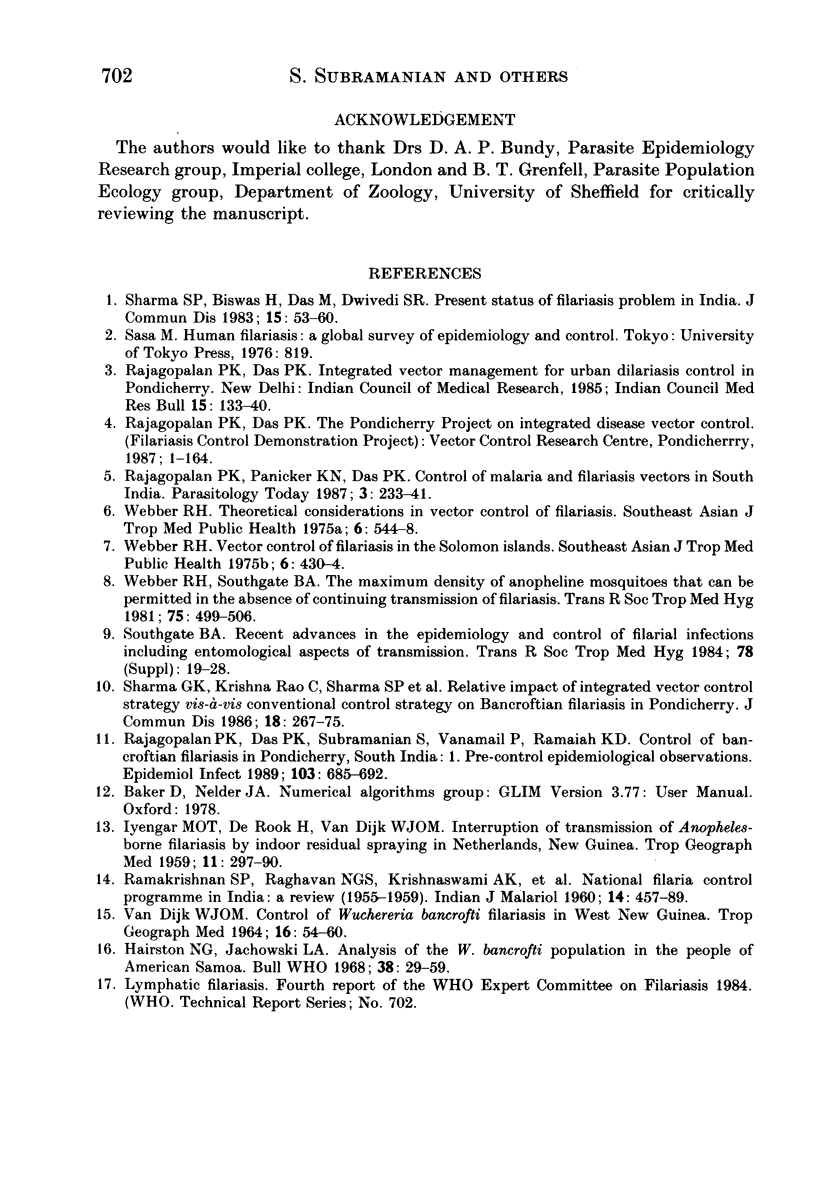
Selected References
These references are in PubMed. This may not be the complete list of references from this article.
- Hariston N. G., Jachowski L. A. Analysis of the Wuchereria bancrofti population in the people of American Samoa. Bull World Health Organ. 1968;38(1):29–59. [PMC free article] [PubMed] [Google Scholar]
- RAMAKRISHNAN S. P., RAGHAVAN N. G., KRISHNASWAMI A. K., NAIR C. P., BASU P. C., SINGH D., KRISHNAN K. S. National Filaria Control Programme in India: a review (1955-59). Indian J Malariol. 1960 Dec;14:457–494. [PubMed] [Google Scholar]
- Rajagopalan P. K., Das P. K., Subramanian S., Vanamail P., Ramaiah K. D. Bancroftian filariasis in Pondicherry, south India: 1. Pre-control epidemiological observations. Epidemiol Infect. 1989 Dec;103(3):685–692. doi: 10.1017/s0950268800031083. [DOI] [PMC free article] [PubMed] [Google Scholar]
- Rajagopalan P. K., Panicker K. N., Das P. K. Control of malaria and filariasis vectors in South India. Parasitol Today. 1987 Aug;3(8):233–241. doi: 10.1016/0169-4758(87)90146-3. [DOI] [PubMed] [Google Scholar]
- Sharma G. K., Rao C. K., Sharma S. P., Sundaram R. M., Ghosh T. K., Raina V. K., Rao P. K., Das M. Relative impact of integrated vector control strategy vis-a-vis conventional control strategy on bancroftian filariasis in Pondicherry. J Commun Dis. 1986 Dec;18(4):267–275. [PubMed] [Google Scholar]
- Sharma S. P., Biswas H., Das M., Dwivedi S. R. Present status of the filariasis problem in India. J Commun Dis. 1983 Mar;15(1):53–60. [PubMed] [Google Scholar]
- Southgate B. A. Recent advances in the epidemiology and control of filarial infections including entomological aspects of transmission. Trans R Soc Trop Med Hyg. 1984;78 (Suppl):19–28. doi: 10.1016/0035-9203(84)90310-9. [DOI] [PubMed] [Google Scholar]
- Webber R. H., Southgate B. A. The maximum density of anopheline mosquitoes that can be permitted in the absence of continuing transmission of filariasis. Trans R Soc Trop Med Hyg. 1981;75(4):499–506. doi: 10.1016/0035-9203(81)90185-1. [DOI] [PubMed] [Google Scholar]
- Webber R. H. Theoretical considerations in the vector control of filariasis. Southeast Asian J Trop Med Public Health. 1975 Dec;6(4):544–548. [PubMed] [Google Scholar]
- Webber R. H. Vector control of filariasis in the Solomon Islands. Southeast Asian J Trop Med Public Health. 1975 Sep;6(3):430–434. [PubMed] [Google Scholar]


